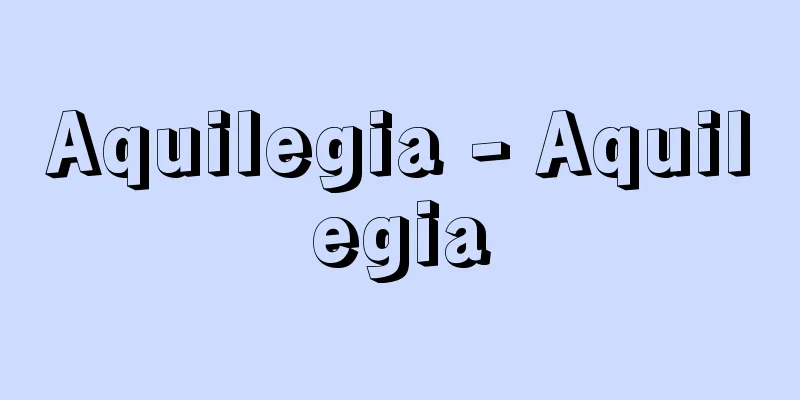Shinetsu Main Line - Shinetsu Main Line

|
The name of the East Japan Railway Company (JR East) line that runs through the Kanto and Chubu regions. It consists of three sections: 29.7 km between Takasaki and Yokokawa, 9.3 km between Shinonoi and Nagano, and 136.3 km between Naoetsu and Niigata, for a total operating distance of 175.3 km. The entire line is double tracked and DC electrified. It runs from Takasaki to Yokokawa (Yokokawa is connected by bus to Karuizawa, and from Karuizawa to Shinonoi by the third-sector Shinano Railway), from Shinonoi to Nagano (Shinano Railway is connected from Nagano to Myoko-Kogen, and Echigo Tokimeki Railway is connected from Myoko-Kogen to Naoetsu), and further on to Niigata via Nagaoka from Naoetsu. However, the Shinetsu Main Line was limited to the above-mentioned sections only after the opening of the Hokuriku (Nagano) Shinkansen in 1997 (Heisei 9) and the extension of the Hokuriku Shinkansen in 2015 (Heisei 27); prior to that, the Shinetsu Main Line also included the Yokokawa-Karuizawa-Shinonoi and Nagano-Naoetsu sections. Before 1997, the old Shinetsu Main Line ran 327.1 km between Takasaki, Nagano and Niigata. The sections between Takasaki and Kita-Nagano, Kurohime and Myoko-Kogen, and Naoetsu and Niigata were double-tracked. Linked with the Takasaki Line, it connects northern and eastern Nagano Prefecture and western Niigata Prefecture with the Kanto region, and also runs through Niigata Prefecture to form part of the Japan Sea Longitudinal Line. Along the line are cities such as Takasaki, Annaka, Nagano, Joetsu, Kashiwazaki, Nagaoka, Mitsuke, Sanjo, Kamo, Niitsu and Niigata, as well as many tourist destinations in the Joshinetsu Kogen and Myoko-Togakushi mountain ranges of Japan. The section of the old Shinetsu Main Line that runs through the central highlands has many steep gradients, especially between Yokokawa and Karuizawa on the border between Gunma and Nagano prefectures, where the steepest gradient on the JR line was 66.7‰ (per mille). In the past, this section was operated using the Abt system, a rack rail system, but when the new line opened in 1963, it was changed to an adhesion system (a system that propels trains by using friction between the rails and the wheels) with a dedicated locomotive attached as an auxiliary engine. The section between Takasaki and Naoetsu was opened between 1885 and 1893 (Meiji 18-26) as part of the government-run Nakasendo Railway and as a material transport line, while the section between Naoetsu and Niigata was opened as the Hokuetsu Railway between 1897 and 1904. Initially, the line played a major role in connecting Tokyo with central and northern Niigata Prefecture, but this function was lost when the Joetsu Line was completed in 1931 (Showa 6). Partial electrification was carried out between Yokokawa and Karuizawa in 1912 (Abt system, the first commercial electric locomotive operation in the JNR), and between Miyauchi and Nagaoka in 1947 (Showa 22) (due to the electrification of the Joetsu Line), but the entire line was electrified as a main line between 1962 and 1966. In 1987, following the privatization of the Japanese National Railways (JNR), it became part of JR East. With the opening of the Hokuriku Shinkansen between Takasaki and Nagano (the so-called Nagano Shinkansen) (October 1997), the Yokokawa-Karuizawa section was converted to bus service, and the Karuizawa-Shinonoi section was transferred to the third-sector Shinano Railway. After that, with the extension of the Hokuriku Shinkansen to Kanazawa in March 2015, the Nagano-Myoko-Kogen section was transferred to the Shinano Railway, and the Myoko-Kogen to Naoetsu section was transferred to the third-sector Echigo Tokimeki Railway. [Eiichi Aoki and Ryo Aoki, August 19, 2015] [References] | | | |This brick arch bridge remains between Yokokawa and Karuizawa on the Shinetsu Main Line, which was abandoned in 1997 (Heisei 9). It is affectionately known as the "Megane Bridge." It was completed in 1892 (Meiji 25). Due to the steep gradients and difficult conditions, the Abt system railway was used, and it opened the following year in 1893, becoming the first railway to cross the Usui Pass. Many bridges and tunnels remain in the abandoned section. Nationally designated Important Cultural Property Annaka City, Gunma Prefecture ©Shogakukan "> Usui Third Bridge Source: Shogakukan Encyclopedia Nipponica About Encyclopedia Nipponica Information | Legend |
|
関東・中部地方を走る東日本旅客鉄道(JR東日本)の線路名称。三つの区間からなり、高崎―横川間29.7キロメートル、篠ノ井(しののい)―長野間9.3キロメートル、直江津(なおえつ)―新潟間136.3キロメートル、合計営業キロは175.3キロメートルとなる。全線が複線、直流電化。高崎から横川(横川から軽井沢はバス、軽井沢から篠ノ井までは第三セクターしなの鉄道が接続する)、篠ノ井から長野(長野から妙高高原(みょうこうこうげん)まではしなの鉄道、妙高高原から直江津まではえちごトキめき鉄道が接続する)、さらには直江津から長岡を経由して新潟に至る。ただし、信越本線が前記の区間に限定されたのは1997年(平成9)の北陸(長野)新幹線開業、2015年(平成27)の北陸新幹線延伸を経てであり、それ以前は横川―軽井沢―篠ノ井、長野―直江津の区間も信越本線に含まれていた。 1997年以前の旧信越本線は、高崎―長野―新潟間327.1キロメートル。高崎―北長野間、黒姫―妙高高原間、直江津―新潟間が複線化されていた。高崎線と結んで長野県北部と東部、新潟県西部を関東地方と連絡し、また新潟県を縦断して、日本海縦貫線の一部を形成する。沿線には、高崎、安中(あんなか)、長野、上越、柏崎(かしわざき)、長岡、見附(みつけ)、三条、加茂(かも)、新津(にいつ)、新潟などの都市、上信越高原・妙高戸隠(とがくし)連山の両国立公園に属する多くの観光地がある。旧信越本線の中央高地を走る部分では急勾配(きゅうこうばい)区間も多く、とくに群馬・長野県境の横川―軽井沢間にはJRにおける最急勾配であった66.7‰(パーミル)勾配が存在した。かつてはこの区間は、ラックレール式鉄道のうちアプト式を採用して運転されていたが、1963年(昭和38)に新線が開業して専用機関車を補機につけて運転する粘着運転方式(レールと車輪の摩擦で推進する方式)に改められた。 高崎―直江津間は官設の中山道(なかせんどう)鉄道の一部およびその資材輸送線として1885~1893年(明治18~26)に、直江津―新潟間は北越鉄道として1897~1904年にそれぞれ開通した。当初は東京と新潟県中・北部を連絡する役割が大きかったが、1931年(昭和6)の上越線全通によってその機能は失われた。 1912年横川―軽井沢間(アプト式、国有鉄道における営業用電気機関車運転の最初)、1947年(昭和22)宮内―長岡間(上越線電化に伴うもの)と部分的な電化が行われたが、1962~1966年に幹線としての全線電化が完成した。1987年、日本国有鉄道(国鉄)の分割民営化に伴い、JR東日本に所属。北陸新幹線高崎―長野間(いわゆる長野新幹線)の開業(1997年10月)により、横川―軽井沢間はバスに転換し、軽井沢―篠ノ井間は第三セクターしなの鉄道に移管された。その後2015年3月の北陸新幹線の金沢延伸に伴い、長野―妙高高原間はしなの鉄道へ、妙高高原から直江津までは同じく第三セクターのえちごトキめき鉄道に移管された。 [青木栄一・青木 亮 2015年8月19日] [参照項目] | | | |1997年(平成9)に廃線となった信越本線横川―軽井沢間に残るれんが造のアーチ橋。「めがね橋」の愛称で親しまれている。1892年(明治25)完成。急勾配が続く難所のためアプト式鉄道を採用し、翌93年に開通、鉄道が初めて碓氷峠を越えた。廃線区間にはいくつもの橋梁やトンネルなどが残る。国指定重要文化財 群馬県安中市©Shogakukan"> 碓氷第三橋梁 出典 小学館 日本大百科全書(ニッポニカ)日本大百科全書(ニッポニカ)について 情報 | 凡例 |
<<: Julie and La Nouvelle Héloïse
Recommend
Tokyo University of Foreign Studies
It is a national university corporation. Its orig...
Obraje (English spelling)
In Spanish, the word means "workplace." ...
Unazuki [town] - Unazuki
An old town in Shimoniikawa County, occupying the ...
Ugabu - Ugabu
…The Old Testament also lists many musical instru...
Loan - advance
〘noun〙 Money lent to an individual or organization...
tenderloin
… [kinds] There are various types of steaks depen...
Quarantine Speech
Also known as the "Quarantine Speech." A...
marché aux puces (English spelling) marcheauxpuces
…An open-air market selling antiques and used clo...
Oued Asouf Mellen (English spelling) Oued Asouf Mellen
…The main sites are Sefar, Tan Zoumaïtak, Tin Abo...
Theban legend
Part of Greek mythology. Set in the ancient city o...
Hearing test - Choryokukensa
This test distinguishes between conductive hearin...
Overflow dam - Etsuryu dam
... In terms of structure, dams can be divided in...
Anu Ziggurat - Anu Ziggurat
...Because it is a symbolic structure unique to M...
pygmy date palm
…It is also grown in pots for indoor decoration, ...
Organogel - Organogel
A gel containing an organic solvent. An organosol ...









